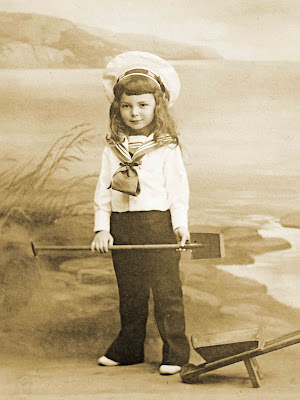In the September 2019 issue of
Toastmaster magazine there is
an article by Ryan Urie on pages 26 and 27 titled
Make Your Slides Sing. In it
he makes a silly statement that you should:
“Use as few words as possible, ideally no more than five or
six per slide.”
Where on earth did that come from? Well, back on January 29,
2007 Seth Godin had
blogged about Really Bad PowerPoint and dogmatically claimed
(without any basis):
“No more than six words on a slide. EVER. There is no
presentation so complex that this rule needs to be broken.”
But six words is barely enough for an outrageous, brief, tabloid
newspaper headline like Dwarf Rapes Nun; Flees in UFO.
Drive-By Billboards – 12 or 20 Words
Two other rules for limiting the number of words on a slide
are based on the time required for reading. A May 29, 2018
article by Paul
Nowak at Iris titled
What is the average reading speed? says the range is from
200 to 250 words per minute. For simplicity I just will pick 240, or 4 words
per second.
On page 140 In her 2008 book Slide:ology in a section on Text
titled Remember the 3-second rule Nancy Duarte stated that:
“Presentations are ‘glance media’ – more closely related to
billboards than other media….
Ask yourself whether your message can be processed
effectively within three seconds. The audience should be able to quickly
ascertain the meaning before turning their attention back to the presenter.”
Her 3-second rule corresponds to 12 words, or twice Seth
Godin’s 6. But then, on page 144 in another section headed How Many Words
Should Be on a Slide? she instead says:
“There really are no official rules on the word count for a
slide. Ultimately you need enough words to make you comfortable delivering your
message. Put enough there to serve as a mnemonic, but go for a very low word
count.”
On October 26, 2011 at Forbes there was
an article by Jerry
Weissman about venture capitalist
Vinod Khosla’s Five-Second Rule. That corresponds to 20
words. On April 6, 2015 I
blogged about it in a post titled
Billboards and the
five-second rule for PowerPoint slides.
NxN (5, 6, 7) Rules of Thumb – for 25, 36, or 49 Words
Communication Guidelines from the Boise State University College
of Business and Economics
say:
“Use the 6 x 6 Rule: Keep the number
of lines per slide to six or less and the number of words per line to six or
less.”
Elsewhere (for
the last fifteen years or so) along with the 6 x 6 rule there are similar
versions - a 5 x 5 rule and a 7 x 7 rule, where the lines sometimes are stated
as a number of bullet points.
None of these rules explicitly state how those words should
be arranged – as a powerful headline sentence or phrase. On April 25, 2019 I
blogged about how
Your presentation and slides need powerful headlines, and on June
4, 2018 I
blogged about how
A presentation slide, presentation, or blog post
needs a great headline rather than just a title. On February 19, 2014 I
blogged
about how
Assertion-Evidence PowerPoint slides are a visual alternative to
bullet point lists.
How does a PowerPoint from Toastmasters compare with Ryan
Urie’s ideal of 5 or 6 words per slide?
Not well! As an example, let’s look at the
Marketing
Presentations web page on the
Toastmasters International web site. The Open House PowerPoint
presentation is titled
Find Your Voice. The first (title) slide has nine words.
The second slide has 3 bullet points and a total of 48 words. The third slide
has 8 bullet points and a total of 46 words. The fourth slide has 5 bullet
points and a total of 58 words. The fifth slide has 6 bullet points and a total
of 41 words. The sixth slide, titled A Glimpse into Pathways, has 10 bullet
points and a total of 111 words.
The pointing Uncle Sam image was adapted from
an old poster
at the
Library of Congress.
September 28, 2019 update – should you only have images (0 words) on PowerPoint
Slides? Probably not!
I received a comment on this post from Glenn (whose profile
has neither a last name nor a location) that:
“I believe the
correct answer for number of words on a non-title PowerPoint slide is zero. Use
images only.”
Also, at The Official Toastmaster International Group on LinkedIn Sue
Ness commented:
“No words. Just illustrations to support your message.”
On Page 210 of the 2014
book by Carmine Gallo titled
Talk
Like Ted: the 9 public speaking secrets of the world’s top minds he said:
“Remember Titanic explorer Robert Ballard in Chapter 4? His
2008 TED presentation contained 57 slides. There were no words on any slide! He
showed pictures and artists’ renderings of the fascinating undersea worlds he’s
discovered, but no text. Why? ‘I’m storytelling, not lecturing,’ Ballard told
me.”
Mr. Ballard’s
TED talk on
The astonishing hidden world of
the deep ocean has compelling, unambiguous images. Most of us do not have that
quality
of graphics, or have rehearsed so much that we can succinctly describe our
slides without written words.
In
an article on October 8, 2012 titled
Slides without Words
at his web site
The Mobile Presenter Dirk Haun noted:
“There's also a
very practical reason to add a caption as a service for your audience: People
may get distracted for a moment (say, by their phone or by something that
happens next to them) and miss your introduction of the slide. Adding a caption
will let them understand what you are talking about without having to interpret
the photo.”
Stephen M. Kosslyn’s 2011 book titled Better PowerPoint (quick
fixes based on how your audience thinks) discusses use of text. On page 61
under Point 3. Using Text with Photos and Clipart he says to:
“Include text with photos and clipart to ensure that:
Audience members will interpret the graphics correctly; many
graphics are inherently ambiguous, and text can clarify what the graphics mean
in the context of your presentation.
Audience members will remember the key concept you are
illustrating.”
On Page 62 under Point 5. Presenting Evidence he say to:
“Use photos to present evidence for your case. Presenting
both text and a graphic will greatly help your audience members to retain the
information (Goldilocks).”
I believe that not having any words is overly restrictive
and simply silly.


























